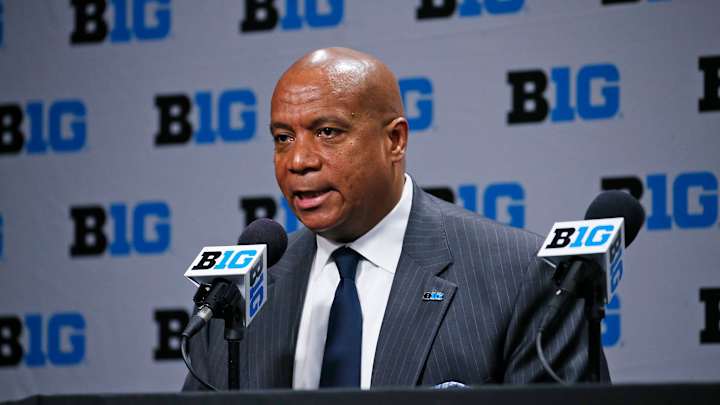Kevin Warren Explains the Decision to Cancel Fall Sports in Letter to Big Ten Community

In response to persistent criticism from players, parents, coaches and fans, Big Ten Conference commissioner Kevin Warren issued an “open letter” Wednesday going into greater detail about the league’s decision to postpone fall sports.
The most pertinent sentence for anyone clinging to a thin hope that the league would change its mind and play football this fall: “The vote by the Big Ten Council of Presidents and Chancellors (COP/C) was overwhelmingly in support of postponing fall sports and will not be revisited.” That sentence also should end this week’s narrative that no vote was taken.
“I could have done a better job last week articulating the numerous concerns and risks,” Warren told Sports Illustrated. “That’s why I want to put things in writing. … This is an incredibly difficult decision, and a lot of the disappointment comes from passion. We have passionate athletes, passionate parents, and 14 passionate fan bases.
“Now I’m doing everything I can to focus on the future, so our student-athletes can have a rewarding Big Ten experience in the winter and spring.”
The wording there is significant. Multiple league sources told SI Wednesday that consensus is building toward a winter football season, starting in early January and ending in late February, utilizing indoor stadiums around the Big Ten footprint. SI’s Albert Breer had the first information on that plan last week.
Warren’s letter listed six bullet points that he called “the primary factors” in the Big Ten’s decision, which was reached after hearing “feedback, guidance and advice from medical experts.” The factors:
- “Transmission rates continue to rise at an alarming rate with little indication from medical experts that our campuses, communities or country could gain control of the spread of the virus prior to the start of competition. As our teams were ramping up for more intense practices, many of our medical staffs did not think the interventions we had planned would be adequate to decrease the potential spread even with very regular testing. As the general student body comes back to campus, spread to student-athletes could reintroduce infection into our athletics community.
- “There is simply too much we do not know about the virus, recovery from infection, and longer-term effects. While the data on cardiomyopathy is preliminary and incomplete, the uncertain risk was unacceptable at this time.
- “Concerns surrounding contact tracing still exist, including the inability to social distance in contact sports pursuant to the Centers for Disease Control and Prevention (CDC) guidelines. While risk mitigation processes (e.g., physical distancing, face coverings, proper hygiene, etc.) can be implemented across campus for the student body population, it became clear those processes could not be fully implemented in contact sports.
- “With the start of full-contact practices and competitions, it became increasingly clear that contact tracing and quarantining would risk frequent and significant disruptions to the practice and competition calendar.
- “Accurate and widely available rapid testing may help mitigate those concerns, but access to accurate tests is currently limited.
- “Significant concerns also exist regarding the testing supply chain, generally, for many of our institutions.”
More NCAA Coverage From Big Ten Sites:
Report: Big Ten Winter Football Schedule Appears Likely
Why Penn State Did Not Pursue Playing Football Outside Big Ten
College Hoops Bubbles Could Work, But Don't Squander December

Pat Forde is a senior writer for Sports Illustrated who covers college football and college basketball as well as the Olympics and horse racing. He cohosts the College Football Enquirer podcast and is a football analyst on the Big Ten Network. He previously worked for Yahoo Sports, ESPN and The (Louisville) Courier-Journal. Forde has won 28 Associated Press Sports Editors writing contest awards, has been published three times in the Best American Sports Writing book series, and was nominated for the 1990 Pulitzer Prize. A past president of the U.S. Basketball Writers Association and member of the Football Writers Association of America, he lives in Louisville with his wife. They have three children, all of whom were collegiate swimmers.
Follow ByPatForde